Benedictines believe in balance
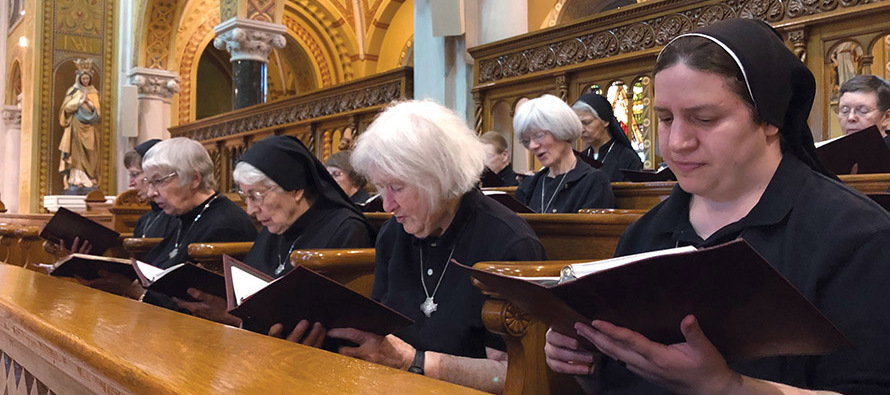
Regular prayer times spread throughout the day are the pattern of life at most Benedictine monasteries. The author, Sister Maria Victoria Cutaia, O.S.B. (far right), prays with her sisters. (Photo courtesy of Benedictine Sisters of Perpetual Adoration.)
THE BENEDICTINE WAY OF LIFE got its start centuries ago with the sixth-century equivalent of a blockbuster. Benedict of Nursia, who led an Italian monastery, wrote the groundbreaking Rule for Monasteries, commonly called the Rule of St. Benedict, around 530. That makes the Rule almost 1,500 years old—quite a legacy considering that this set of rules is still used.
The Rule was first used in monasteries of men and women in Italy, including the monastery run by Benedict’s sister, Saint Scholastica. It spread rapidly all over Europe in the eighth century. Eventually the edicts spread throughout the entire world. The Rule of St. Benedict is much more than regulations, however; it’s a way of life for beginners on the journey of seeking God. “Then with Christ’s help, keep this little rule that we have written for beginners,” wrote Benedict in his Rule. In lots of ways we are all beginners and on a journey toward God.
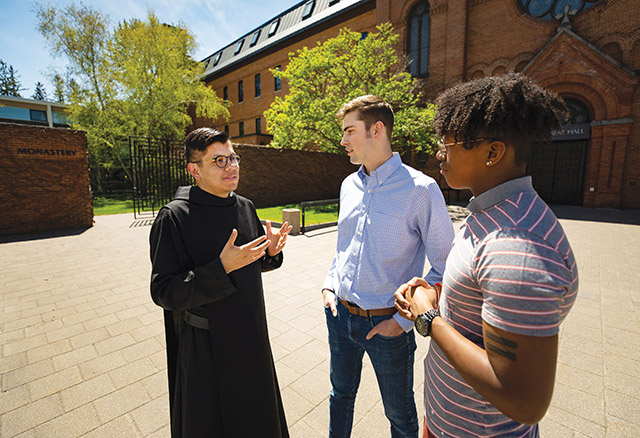
Benedict gives us an opportunity to experience a new way of looking at life. This form of spirituality offers a chance to slow down, pause, and listen to God, even amid the fast-paced world we live in today. We Benedictines strive to live balanced lives, to pray and work (ora et labora). The most important thing, however, is not what we do but who we are.
Prayer and scripture
Most Benedictine monasteries pray the daily Office, a series of scripture-based prayers and hymns throughout the day. Benedictines also practice lectio divina, a meditative reflection on Bible readings.
Hospitality
For centuries, Benedictines have opened their doors to guests, prioritizing the importance of treating each visitor like Christ.
Balanced sense of work
Work is seen as an important, but not dominating, part of Benedictine life. It supports the monastery, serves others, and is part of God’s creative expression.
Work, work, work
Still, what we do is important. Work is an important part of the monastic day. For Benedictines, work serves three purposes. First, we work to support the life of the monastery, to pay the bills and put food on the table. Second, through work we participate in God’s creation, which is why many monasteries are centers of art, craft, and beauty. Third, we work to be of service to others, to share what we have with those in need.
We do not work for individual gain. We work as a community for a common goal. Each Benedictine surrenders her personal goods and her very self to the community. The community holds all things in common. Benedict was a wise leader who said those who need more should be given more because of human weakness, but those who need less should be given less and be grateful that God has made them able to make do with less.
To our modern ears this may seem unfair, but for those who follow Jesus, a man who had “no place to lay his head” and who lived by the kindness of others, this is a practice of compassionate justice. I may not get what I want all the time. But I know the community will provide whatever I need. I just have to know the difference and give thanks.
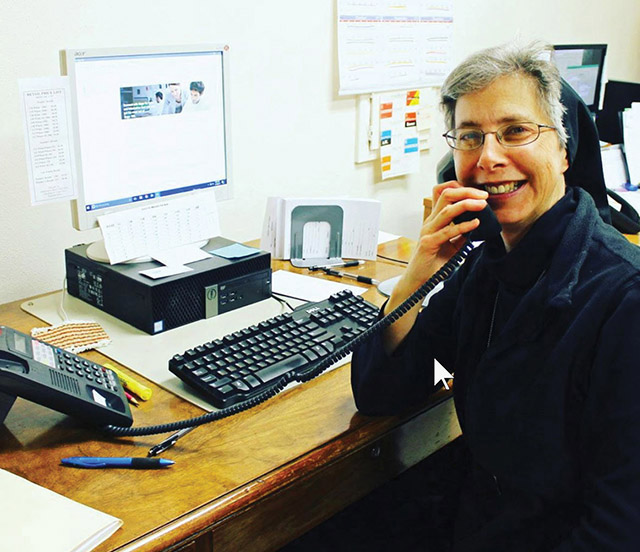
While Benedict puts several chapters in the Rule about work, he doesn’t specify exactly what work or ministry a monastery should focus on. Some monasteries have schools; some have hospitals; others have retreat houses on their grounds. Benedict did value manual labor as well as study and the pursuit of wisdom. My monastery makes altar breads, that is, communion wafers. We also have sisters who craft soaps, lotions, candles, and other items, and we work to keep the house of God clean, in repair, and ready to welcome guests.
All are welcome
Hospitality is very important to Benedictines. We create places of peace and beauty and invite pilgrims, spiritual seekers, and those looking for peace to be our guests. We welcome those who join us in prayer, and those who simply share their prayer intentions with us. One of the purposes of monastic enclosure (living and working in the monastery itself) is so we may be here, at home, when someone comes to us. Benedict asks us to welcome each and every guest as if he or she were Christ coming to us. Whether the guest be poor or well-off, old or young, a member of the faith or not, they all are to be recognized as Christ here among us now.
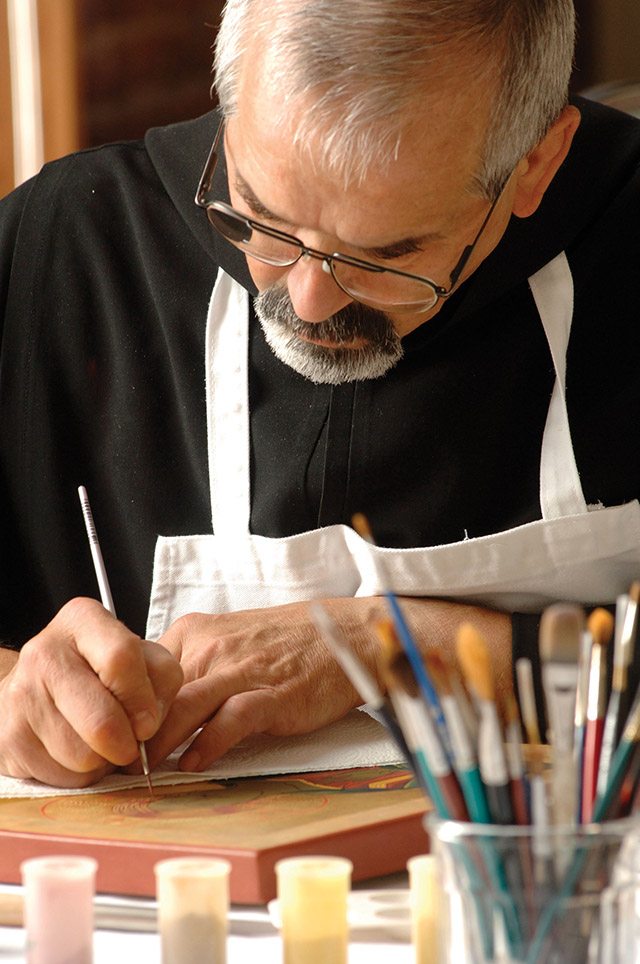
Benedictines live in community and so have many occasions to recognize Christ in one another and to serve each other with mutual respect and love. Saint Benedict urges us “to be the first to show respect to the other.” By pursuing what we judge better for others rather than for ourselves, we learn selflessness and humility. We come to community with varied backgrounds, but we all have the same desire: to seek God and to live mindful of how the ordinary reveals the Divine.
We Benedictines believe it’s possible to live in awareness of the presence of God in everything we do in our daily routine. Attuned to God’s presence in the ordinary events of our lives, they become extraordinary. Even something as simple as making the bed in the morning, washing dishes, or taking out the trash can be a moment of encounter. God is there. We only need to be awake and aware, mindful of God, even in these simple matters, and grateful for God’s presence.
Be we ever so humble
Gratitude, another important aspect of Benedictine spirituality, is a sign that I recognize that all I have is a gift from God, even my talents and skills, my virtues and accomplishments. These are made possible by God’s free gift of grace. Gratitude stems from the virtue of humility: to know who and what I am before God and to live in gratitude for God’s love and blessings. Humility isn’t a matter of looking down at myself or being unworthy. It is a matter of knowing the truth about myself. I am a beloved creature of God. I am not the center of the universe. God is.
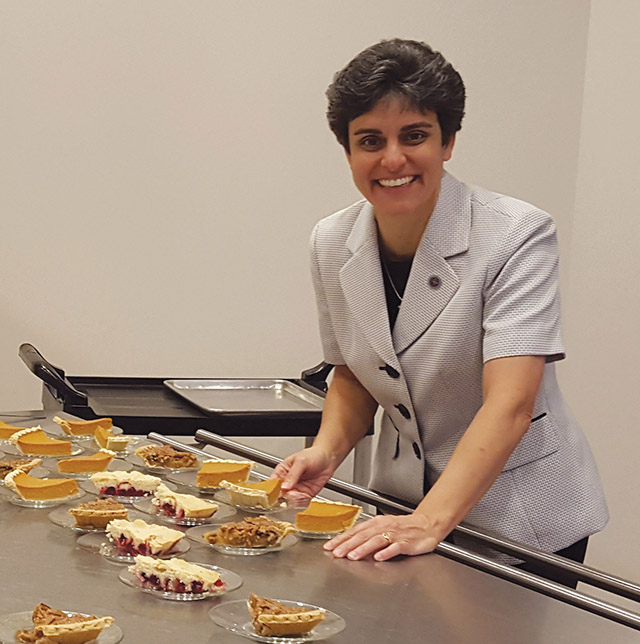
Of course, if everything I have and hold is a gift, then I must be aware of its value. Benedict reminds his followers that we are to treat everything, every tool, dish, and book as a holy vessel of the altar. The book we cherish most is the Bible. Throughout the day we gather as a community in chapel to sing hymns and Psalms, read God’s word, and intercede for the needs of the church and of the world. We call this prayer the Liturgy of the Hours. Spacing this form of prayer throughout the day reminds us that God is present at all times and in all places. Each of us also prays with the Bible, meditating on it and letting the words permeate our very bones.
Sometimes God has used nature to awaken me to the divine presence. I may be walking in the woods and see a heart-shaped leaf or be at water’s edge and find a heart-shaped pebble. I have even looked up at the sky and seen a heart-shaped cloud and become aware of God. It’s as if God is saying to me, “I’m here with you. Know that I love you and you are mine.” One time, I even saw a heart-shaped potato chip! It may not have been as traditionally holy as a vessel on the altar, but it was enough to remind me that even here and even now, in something so ordinary, the Divine is present to those who have eyes to see.
Thus, with a focus on God’s presence in our work, our hospitality, our prayer, and in small everyday moments, the tradition of Benedictine spirituality lives on.
Check out our other entries in VISION’s series on major traditions in religious life: Franciscans and Carmelites.
Tags
Related
- Religious making a difference
- Religious seekers in legal limbo
- Mercy meets at the border
- Religious life: The call continues
- Vocation Basics: Essentials for the vocation journey
- Community life: A place to call home
- A charism encourages a caring ministry
- The four main types of religious life
- Our newest religious possess an age-old Christian virtue: hope
- Celibacy steeped in a whole lot of love Read More
Most Viewed
- Find your spirituality type quiz
- FAQs: Frequently asked questions about vocations
- Celibacy quiz: Can you live a celibate life?
- Resources for older discerners or those with physical and developmental differences
- About Vocation Network and VISION Guide


